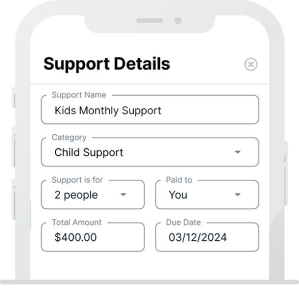Understanding Drug and Alcohol Testing in Child Custody Cases: A Comprehensive Guide
In the challenging landscape of child custody cases, where relationships have broken down, external factors and lifestyle habits play a critical role. The welfare of children is often at the center of divorce proceedings, and co-parenting arrangements are determined based on a combination of evidence. This comprehensive guide aims to demystify court-ordered drug and alcohol testing, addressing common misconceptions and providing insights into cost-effective testing options.
Why You Need to Know About Drug and Alcohol Testing in Child Custody Cases
Navigating child custody cases involves careful consideration of various factors, and drug and alcohol testing is a crucial element. Understanding the testing options, debunking misconceptions, and choosing economically viable analyses are essential for all parties involved. This guide explores alcohol testing, common misconceptions, drug testing options, logistics of sample collection, and the significance of alternative sample types.
Alcohol Testing and Common Misconceptions
Guidelines around excessive alcohol consumption have been coined in collaboration with the World Health Organisation, with industry standards for males indicating the equivalent of 7 units per day, every day consistently over a period of months, would provide an excessive alcohol result, and 5 units per day respectively for females.
Common misconceptions around the testing of alcohol consumption and methods in which to obtain analysis are regularly observed and experienced in our professional experiences. Common examples include requests for more traditional blood testing methods such as Liver Function Testing (LFT) which in a standalone capacity can provide insight into consumption but will more likely not provide the foundational aspect of forensic reliability that assists the case. LFT testing is in essence a measurement of the functionality of the liver, meaning variables such as an underlying health condition, or perhaps sustained heavy consumption of alcohol over a period of time will provide a result that will indicate signs of excessive alcohol consumption yet tests such as LFT only measure the indirect impact of alcohol on the body, compared to a direct bio-marker measuring the level of consumption itself over the allotted time period of analysis. Tests such as LFT have been designed to get a measurement of analysis, but are very limited in circumstances in which a client may have had a history of alcohol consumption but is displaying a clear pattern or change, and wishes to demonstrate either sustained abstinence or consumption at a level that would be deemed within a social or moderate level.
Fortunately, with advancement in the toxicology sector, blood tests do exist that have the capacity to measure alcohol consumption to an incredibly precise level, and provide a range of categorisations including abstinence. Phosphatidylethanol (PEth) is a direct bio-marker of alcohol, can only be detected in the blood if ethanol has been consumed, and is not impacted or influenced by such variables as age, gender, weight, health, or medication. A PEth test, when coupled with a hair strand analysis provides a solid background into both historic and recent consumption, with both suited to either abstinence or excessive forensic evidence. Hair strand alcohol analysis can cover a period of up to 6 months provided sufficient hair sample is available (1cm per 1 month of analysis approximately), and measures alcohol consumption through Ethyl Glucuronide (EtG) & Fatty Acid Ethyl Esters (FAEE) markers, which are deposited into the hair through both blood capillaries and the sebaceous gland.
A common misconception often experienced is the request for EtG/FAEE testing in circumstances that do not necessarily merit the requirement for both. For example, in circumstances where the hair has not been chemically treated, EtG as a standalone analysis will provide all the analysis required for indication of either excessive, social or abstinence readings. The introduction of FAEE testing is only required where chemical treatment is either suspected and clearly evident, and for relevance its use is due to its increased resistance to such chemical treatments. This can be critical knowledge when it comes to reducing the costs for testing for either yourself or your client, by reducing the need for testing that has no added benefit in certain circumstances.
Learn about drug and alcohol testing in California child custody cases
In California child custody cases, gaining insights into the intricacies of drug and alcohol testing is paramount due to its pivotal role in shaping legal outcomes. Testing, ranging from 11-19 times, becomes a crucial tool in cases involving 2-7 child custody disputes. Courts may order 1-6 drug tests and alcohol tests to assess parental fitness, adhering to family law principles, emphasized 2-6 times. Testing in child custody, occurring 1-2 times, is designed to protect the best interest of the child, and various tests used in child custody cases, including hair follicle testing and Peth level calculations, offer comprehensive insights. Understanding the dynamics of drug testing in child custody, which occurs 1-2 times, and its usage in California child custody cases, ensures parents navigate the legal landscape effectively. A positive drug test can lead to severe consequences, such as losing custody (1 time), emphasizing the critical role of family law attorneys (2-4 times) in advocating for the best interest of the child. Therefore, staying informed about the testing procedures, court orders, and potential outcomes is crucial for any parent involved in a child custody case in California.
What Happens if a Parent Fails Their Drug or Alcohol Test?
If a parent fails their drug or alcohol test in a child custody case, the repercussions can be significant and multifaceted. The court, guided by family law principles and the best interest of the child (which is emphasized 1-3 times), may order testing (1-2 times) as a means to assess the parent’s fitness. Testing in child custody cases involves various methods such as drug tests (1-6 times) and alcohol tests (1-6 times), and the court may use tests (11-19 times) to gather independent corroboration (1 time) of substance abuse accusations (1 time). The court order (1-2 times) to submit to testing is backed by the understanding that it is crucial for determining the child’s best interest. If a parent tests positive for drugs or alcohol, it may lead to a loss of custody or visitation rights (1-5 times). The court may also require the parent to undergo drug testing (1 time) or alcohol testing, particularly in California child custody cases (1 time). The use of controlled substances (1 time) can further raise concerns about habitual (1 time) drug use (1-3 times) or alcohol abuse (1-4 times). Family law attorneys (2-4 times) can play a pivotal role in navigating these complex situations, helping parents understand the implications and potential outcomes. Ultimately, the court must use the least intrusive method (1 time) to address substance abuse concerns, ensuring a fair process that considers the best interest of the child.
Drug Testing – What is My Best Option?
When it comes to testing for drugs, the options available to you can be incredibly diverse and often confusing, with a myriad of options available over varying timeframes. Typically with drug testing, the matrix of hair provides the best option when conducting any historical analysis, with either a 3 or 6 month period the most commonly ordered period of testing, length of hair permitting. Our advice for the type of analysis is best placed having had the opportunity to discuss the case file details with you first hand to provide our professional recommendation on the mode of testing, although of course this is not always necessary if the court has already ordered its method of analysis.
Depending on the circumstances, two options exist for conducting analysis through hair strand testing – Overview Analysis and Segmented Analysis. An overview analysis can cover anywhere up to a 6 month period in one segment, and will test the segment as a whole for firstly detection of substances, and the volume of usage. We typically advise this option in circumstances where one is looking to disprove a drug allegation, or to show total abstinence from consumption. This mode of testing is a more cost-effective method of testing than a segmented analysis, but this is not to say one test is better than the other. Both serve a crucial purpose to the court, but this is entirely dependent on the case history, and ensuring the chosen mode for testing provides the best degree of forensic validity to assist yourselves and the courts.
A segmented analysis works by sectioning the hair sample into smaller segments, and providing a month-by-month breakdown of analysis. This can be especially useful in obtaining a picture of consumption over a period of time and detecting a pattern of change in consumption. The advice in any circumstances in which drug usage has been declared, or an individual is trying to show a decrease/ abstaining from usage is to analyse in a segmented capacity. We often experience requests for segmented testing in circumstances where an individual is merely looking to disprove an allegation, and vice versa where overview testing is used in cases where an individual has consumed drugs and will require a broken down analysis to demonstrate a pattern of change in consumption. The key point to note here is the critical importance of case history, and using this to discuss with a toxicological provider as to the best manner to proceed forward, whilst providing the most economic option to all parties.
We understand that concerns around the cosmetic impact of taking a hair sample can often have a bearing on testing and the case, but it is often little known that alternatives do exist. Nail testing works in a similar manner to hair strand testing, measuring drugs and metabolites deposited into the nail keratin as it grows. Sample collection is akin to general maintenance of nails that one would do at home, and for testing we will typically require 2 to 3mm per finger clipping. Nail testing provides a dense overview of 0-3 months and up to 6 months, and has added benefit of not being impacted or influenced by chemical treatments or cosmetic treatments. The same method of analysis can also be applied to the aforementioned alcohol testing, but only to test for excessive consumption and never for pure abstinence. Our recommendation in cases where an individual has limited head hair is always the alternative sample type of nails, given its detection window and flexibility.
Logistics – How Does It Work?
You may have received a court order that stipulates that hair or blood samples are to be taken by a general practitioner with a kit to be sent to the doctor in order to conduct the sampling. This request perhaps stems from a traditional direction that is often copied and points to the procedures that were traditionally used, before in-house collection networks were established with trained sample collectors. From experience, facilitating an appointment with a GP presents a number of challenges and potential delays to the case, relinquishing your control of the timings of the case to workaround those of an overstretched public sector service. Regarding the appointment, we’ll have to liaise with and train the doctor. This is especially key in hair collection, as it is essential that the sample is collected in a very specific way to ensure forensic analysis follows specifications according to the research and scientific literature. We also need to ensure that the sample is collected in a way that does not limit or alter the detection period in the analysis.Therefore, we usually disregard these sections of the order, and instead use our trained sample collectors who offer the flexibility in arranging collections perhaps around working hours, childcare commitments and even attending your place of work if convenient. By utilising this service, we can ensure that all ‘sample by’ dates are adhered to, and provide a precise date for return of results.
Often cases involving child-care arrangements will involve an individual representing themselves as a litigant in person in proceedings. It is key to note that any toxicology firm will be happy to provide a detailed overview of testing and the science that underpins it, and ensure that fair and balanced advice is provided to both parties in the case. The same will apply for any jointly instructed testing, with strict and robust procedures in place to ensure all communication passses through the correct channels and both parties are privy to the same updates pertaining to the case. It can often be a daunting process for individuals not necessarily well acquainted with the legal process and in circumstances that dictate the requirement for forensic evidence, and this hopefully helpful insight is designed to put one’s mind at rest regardless of their position in proceedings and their experiences with forensic service providers.
Article Summary: Key Takeaways
-
Alcohol testing using advanced methods like Phosphatidylethanol (PEth) coupled with hair strand analysis provides precise and reliable results.
-
Understanding the differences between overview and segmented drug testing is crucial, with nail testing offering a less invasive alternative.
-
Trained sample collectors offer flexibility and adherence to forensic analysis specifications, ensuring timely results.
-
Misconceptions around traditional testing methods and unnecessary use of specific analyses can be costly and may not provide the needed forensic validity.
-
Individuals representing themselves in court can benefit from the expertise of toxicology firms, ensuring fair and balanced advice.
In child custody cases, the importance of accurate and reliable testing cannot be overstated. By debunking common misconceptions and understanding the intricacies of drug and alcohol testing, all parties involved can navigate the legal landscape more confidently. Choose testing options wisely, considering the best interests of the child and ensuring compliance with court orders.
This article was contributed by:
Martyn Danks – Senior Client Manager
Martyn joined DNA Legal in October 2017. He has coupled his understanding of the Law, with the knowledge garnered from his degree in Criminology and Sociology into practice with a view to implementing successful working practices on a wider scale directive
Website: dnalegal.com









